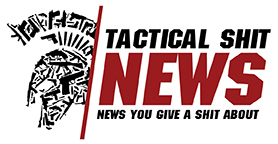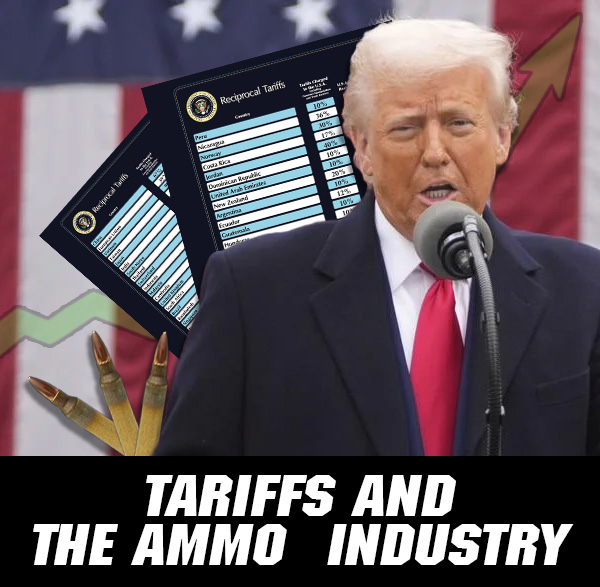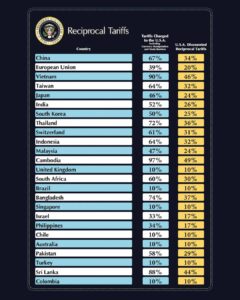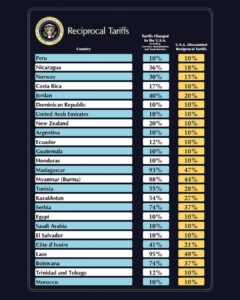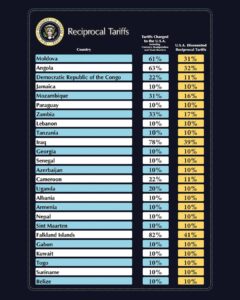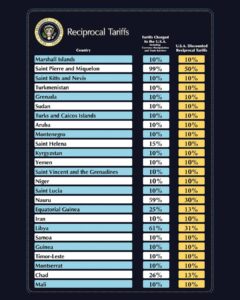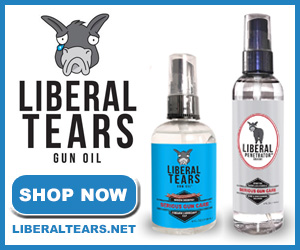As the global trade landscape shifts under the weight of new U.S. tariff policies in 2025, the ammunition industry—both imported brands and American manufacturers—are bracing for impact. With President Trump’s administration rolling out tariffs targeting countries like Canada, Mexico, China, and others, the cost of doing business in the firearms and ammo sector is poised to climb. For consumers, this could mean higher prices at the gun shop counter, while foreign and domestic manufacturers face a complex web of supply chain challenges. Let’s break it down, starting with how imported ammunition brands like PPU, PMC, Armscor, Aguila, and GGG will feel the squeeze, followed by why American heavyweights like Federal and Winchester aren’t immune either.
Imported Ammunition: A Tariff Tightrope
Imported ammunition has long been a staple for American shooters, offering a mix of affordability and variety. Brands like Prvi Partizan (PPU) from Serbia, PMC from South Korea, Armscor from the Philippines, Aguila from Mexico, and GGG from Lithuania have carved out loyal followings by delivering reliable rounds at competitive prices. However, with tariffs looming—ranging from 10% on Chinese goods to 25% on imports from Canada and Mexico—these brands are staring down a potential cost crisis.
Take PPU, for example. Serbia isn’t currently on the tariff hit list, but its ammo often routes through U.S. distributors who may source components or packaging from tariffed nations. If shipping costs rise or secondary suppliers pass on tariff-related expenses, PPU’s budget-friendly 7.62x39mm or .308 Winchester rounds could see price hikes of 10-20%. PMC, manufactured by South Korea’s Poongsan Corporation, faces a similar predicament. South Korea isn’t explicitly targeted yet, but any broader Asian tariff expansion—or disruptions in its U.S.-bound supply chain—could push up the cost of its popular Bronze line of handgun ammo.
Armscor and Aguila, hailing from the Philippines and Mexico, respectively, are in even hotter water. Mexico’s 25% tariff, set to kick in unless border security talks resolve tensions, directly threatens Aguila’s bottom line. Its rimfire and shotgun offerings, beloved by plinkers and hunters, could jump in price, eroding its edge over domestic competitors. Armscor, meanwhile, might dodge direct tariffs for now, but its reliance on global shipping lanes and potential component sourcing from China (think brass or lead) could still drive costs upward.
GGG, a Lithuanian brand known for NATO-spec ammo, might seem insulated from North American-focused tariffs. However, if the U.S. extends duties to EU countries—or if Canada imposes retaliatory tariffs affecting transatlantic trade—GGG’s 5.56x45mm and 7.62x51mm rounds could become pricier for American buyers. The ripple effect is clear: even brands from non-tariffed nations aren’t entirely safe when global supply chains intertwine.
For these importers, the options are grim: absorb the costs and shrink profit margins, pass the increases onto consumers and risk losing market share, or scramble to find alternative suppliers—none of which is a quick fix. Early signs suggest many will opt for the middle path, with retailers already warning of impending price adjustments on imported ammo shelves.
The chart of tariffs from the April 2nd presser from the Day of Liberation held up by Donald Trump
American Manufacturers: No Safe Haven
If you think domestic giants like Federal and Winchester are sitting pretty, think again. While tariffs aim to bolster U.S. manufacturing, the reality is that even “Made in the USA” ammo relies heavily on foreign components. From powder to primers, the supply chain for American ammunition stretches across borders—straight into tariff territory.
Federal, based in Minnesota, and Winchester, with plants in Illinois and Mississippi, are titans of the industry. Federal’s Premium hunting loads and Winchester’s Super-X shotgun shells are American icons. But dig into their production, and you’ll find a global footprint. Gunpowder, a critical ingredient, often comes from overseas. Australia’s ADI (Australian Defence Industries) supplies Hodgdon-branded powders like Varget and H4350, widely used in American ammo plants. China, meanwhile, is a key source of raw materials for smokeless powder production. With a 10% tariff on Chinese goods already in play—and potential escalations looming—powder costs could spike, forcing Federal and Winchester to either eat the expense or raise prices.
Primers, the tiny ignition caps that set off every round, are another pain point. Italy’s Fiocchi and Germany’s RUAG (via its Geco brand) are major players in the primer market, supplying both their own ammo and components to U.S. manufacturers. If tariffs hit the EU—or if shipping disruptions from Canada (a key trade conduit) worsen—primer prices could climb 15-25%. Federal, which also produces its own primers under the CCI brand, and Winchester, owned by Olin Corporation, might lean harder on domestic production. But scaling up isn’t instant, and both companies have faced shortages before—remember the post-2020 ammo crunch?
Then there’s brass and lead. Canada supplies a hefty chunk of America’s lead (25% tariff) and zinc (used in brass casings), while China contributes smaller but critical amounts. The last U.S. lead smelter closed in 2023, leaving domestic manufacturers dependent on imports or recycling. Tariffs on these metals could add a few cents per round—a small figure that balloons when you’re producing millions of cartridges annually.
The Bigger Picture: Pain Now, Gain Later?
The Trump administration pitches tariffs as a way to boost American self-sufficiency, and in the long run, that might hold true. Domestic powder and primer plants—like White River Energetics’ fledgling efforts in the U.S.—could eventually fill the gap. But “eventually” is the operative word. Building new facilities takes years, not months, and environmental regulations (hello, EPA) make it a slog. In the meantime, Federal and Winchester face the same dilemma as their imported rivals: higher costs, tighter margins, and restless customers.
For shooters, the outlook is sobering. A box of PMC 9mm that cost $12 last year might hit $15 by summer. Federal’s Gold Medal match ammo could jump from $30 to $35 per box. Winchester’s AA target loads? Add a few bucks. Stockpiling now might be the smart play—retailers like United Patriot Supply are already touting pre-tariff inventories to soften the blow.
The ammunition industry, foreign and domestic, is at a crossroads. Imported brands like PPU, PMC, Armscor, Aguila, and GGG will feel the tariff heat directly or indirectly, while American stalwarts like Federal and Winchester grapple with a supply chain that’s more global than their branding suggests. As tariffs reshape trade, one thing’s certain: the cost of pulling the trigger is going up—for everyone.
—
Stay tuned for updates as the tariff saga unfolds. Will manufacturers adapt, or will shooters bear the brunt?

